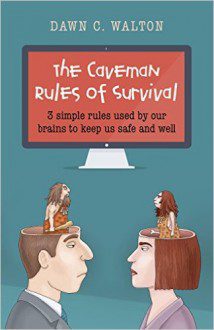By Dawn Walton
Guest Writer for Wake Up World
Did you realise the physical experience of being scared is exactly the same as the physical experience of being excited? The difference is all in the head.
It’s all based on the fight or flight response (this should include the word freeze, as that is also an option). The need for this response comes from the caveman days where in order to survive attack we needed to be able to respond instantly, without giving it any thought. Think about it: you are being attacked by a sabre toothed tiger – if you take the time to work out if your brought your best spear, or if you can outrun it on this terrain, then you’re dead. The fight or flight response is a primitive instant and emotional response to keep you alive.
So, whilst we have physically evolved and adapted for a modern environment, the brain is still working on a set of rules that come from the caveman days.
The physiology of the fight or flight response – your heart beats faster, adrenaline courses through your body (adrenaline surpresses viruses and pain), and you find yourself on a high state of alert – is designed to give us the best chance of surviving an encounter with a sabre toothed tiger. And yet there are no tigers any more. In fact there are no predators. However we can all relate to those physical symptoms; we call them nerves, anxiety, or even a panic attack.
[pro_ad_display_adzone id=”110028″]
What most people don’t realise is that those physical symptoms are also equally true if we are excited or filled with anticipation. The interpretation of what those physical symptoms means all happens in the head. Why do you think there are adrenaline junkies out there that love to jump off buildings on bungee ropes and climb the highest mountains? They interpret the physical symptoms of fear as a buzz.
So how do you apply this? How do you re-interpret the physical symptoms of anxiety into anticipation? The trickiest part of this is that when faced with a threat, your cognitive function is disengaged by your subconscious. This means that trying to think your way out of anxiety is almost impossible.
You can trick your subconscious though.
The link between the mind and body is two-way. The mind instructs the body, but the body also instructs the mind. A trigger observed by the brain can trigger a physiological anxiety response. If you change what is physically happening in your body, it will tell your mind “Stand down, move along, nothing to worry about here.”
Simple Tip to Trick Your Brain Out of Anxiety
You will see from the cycle that one of the aspects of the fight or flight response is a shortness of breath. So this is how you send a message from your body to your brain:
- Breathe in for the count of 2 and out for the count of 2
- Breathe in for the count of 3 and out for the count of 3
- Breathe in for the count of 4 and out for the count of 4
- Breathe in for the count of 5 and out for the count of 5
- Breathe in for the count of 6 and out for the count of 4
- Breathe in for the count of 7 and out for the count of 7
- Repeat for as long as you need to up to the count of 10
This simple trick will get your subconscious to stand down. This allows you to regain cognitive thinking. Once you have your thinking brain back, you can re-interpret that physical sensation as excitement, or just anticipation of something unknown.
The Caveman Rules of Survival
A book by author and cognitive hypnotherapist Dawn Walton…
The subconscious is overdue a software upgrade. This primitive and emotional part of your brain follows rules for keeping you safe and well based on the caveman days, where sabre-toothed tigers and other predators were the biggest threat. If you have ever had a battle going on in your head between what you believe you want to do, and the part of you that seems to hold you back, then this book – The Caveman Rules of Survival – is for you.
“This is a fantastic book. It is simple, straight to the point, and offers great advice for people wishing to feel happy and get more in control of their lives.” ~ Dr. David Hamilton, best selling author.
‘The Caveman Rules of Survival’ is available on Amazon.com and Amazon.co.uk, or visit TheCavemanRulesOfSurvival.com for more information.
Recommended reading by Dawn Walton:
- You Are Depressed For a Reason… But It’s Not What You Think
- You’re Not a Mind Reader – Stop Worrying What Other People Think of You
- Sleep Problems Come From the Day Not the Night
- Addiction is Not Necessarily an Addiction for Life
- Fight, Flight… or Fun? Turning Anxiety into Anticipation
- Even Positive People Have Negative Thoughts
- Understanding and Overcoming Food Addiction
About the author:
Dawn Walton is the author of The Caveman Rules of Survival, and a practicing cognitive hypnotherapist. She runs sessions in person out of offices in Dundee and Aberdeen in the UK, and internationally via Skype and Facetime; most clients only need two or three sessions to rewrite the rules in their rule book.
You can connect with Dawn via:
- Therapy site: www.thinkitchangeit.com
- Author site: www.thecavemanrulesofsurvival.com
- Facebook: Facebook.com/DawnatThinkitChangeit
- Twitter: @ThinkitChangeit
- Skype: @Thinkitchangeit
- Email: [email protected]
- Amazon UK : The Caveman Rules of Survival
- Amazon US : The Caveman Rules of Survival
[pro_ad_display_adzone id=”110027″]









